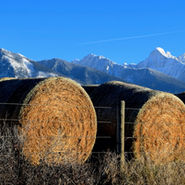

Clastic Dikes Form Polygonal Networks
Networks of Pleistocene clastic dikes are sometimes visible on bladed slopes or surfaces that have had all vegetation removed. Aerial...


Mapping Stock Watering Structures in Southeast Idaho
I used to work for the Confederated Tribes of the Colville Indian Reservation. I was the Soil Scientist. The Tribe manages 1.4 million...


How I Take Field Notes on Clastic Dikes
"You can tell the cut of a Geologist's jib by the state of his field book." Above is a page from one of my field books showing what data...










